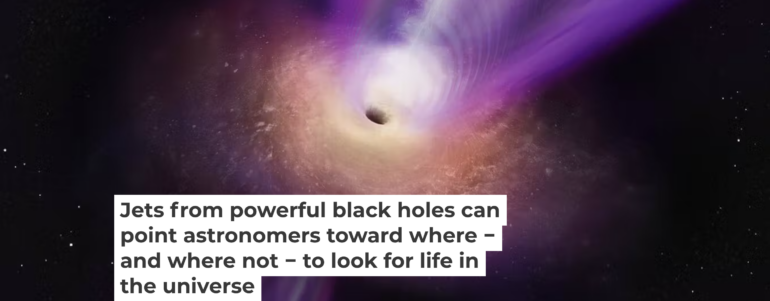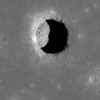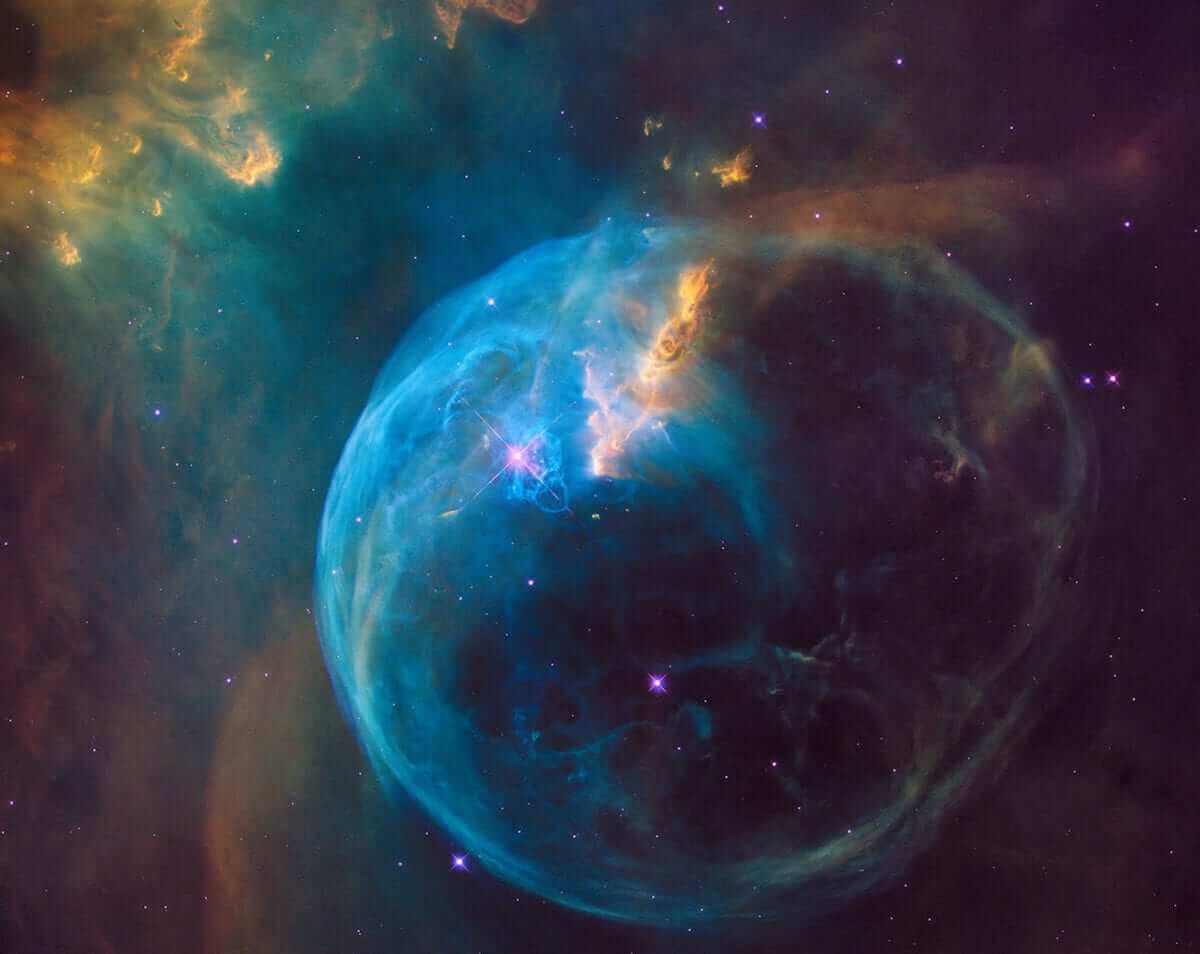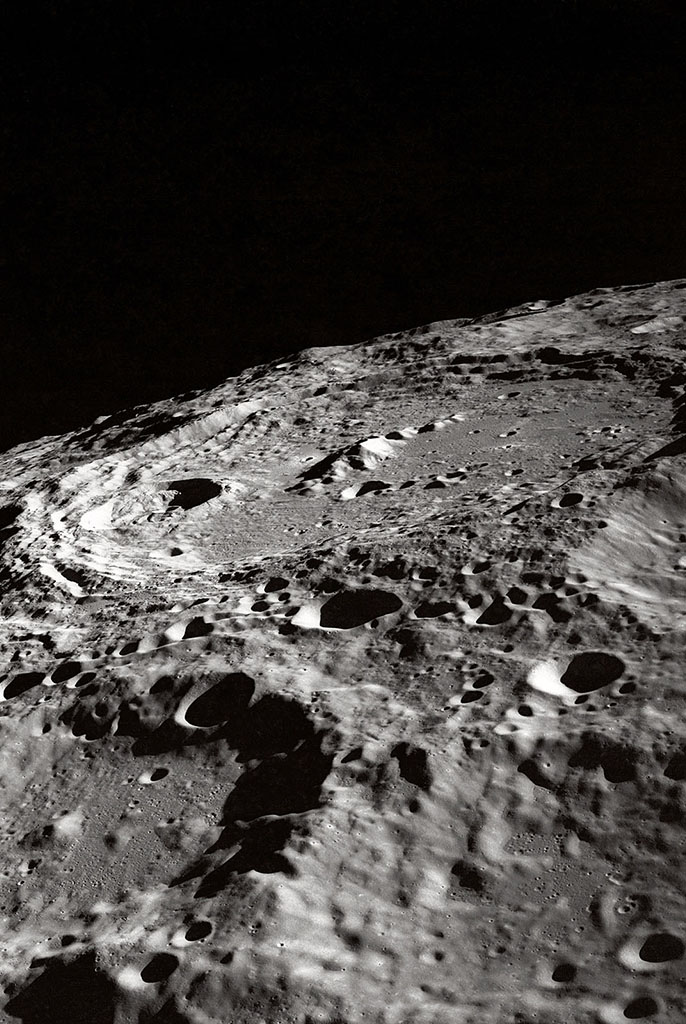One of the most powerful objects in the universe is a radio quasar – a spinning black hole spraying out highly energetic particles. Come too close to one, and you’d get sucked in by its gravitational pull, or burn up from the intense heat surrounding it. But ironically, studying black holes and their jets can give researchers insight into where potentially habitable worlds might be in the universe.
As an astrophysicist, I’ve spent two decades modeling how black holes spin, how that creates jets, and how they affect the environment of space around them.
What are black holes?
Black holes are massive, astrophysical objects that use gravity to pull surrounding objects into them. Active black holes have a pancake-shaped structure around them called an accretion disk, which contains hot, electrically charged gas.
The plasma that makes up the accretion disk comes from farther out in the galaxy. When two galaxies collide and merge, gas is funneled into the central region of that merger. Some of that gas ends up getting close to the newly merged black hole and forms the accretion disk.
There is one supermassive black hole at the heart of every massive galaxy.
Black holes and their disks can rotate, and when they do, they drag space and time with them – a concept that’s mind-boggling and very hard to grasp conceptually. But black holes are important to study because they produce enormous amounts of energy that can influence galaxies.
How energetic a black hole is depends on different factors, such as the mass of the black hole, whether it rotates rapidly, and whether lots of material falls onto it. Mergers fuel the most energetic black holes, but not all black holes are fed by gas from a merger. In spiral galaxies, for example, less gas tends to fall into the center, and the central black hole tends to have less energy.
One of the ways they generate energy is through what scientists call “jets” of highly energetic particles. A black hole can pull in magnetic fields and energetic particles surrounding it, and then as the black hole rotates, the magnetic fields twist into a jet that sprays out highly energetic particles.
Magnetic fields twist around the black hole as it rotates to store energy – kind of like when you pull and twist a rubber band. When you release the rubber band, it snaps forward. Similarly, the magnetic fields release their energy by producing these jets.
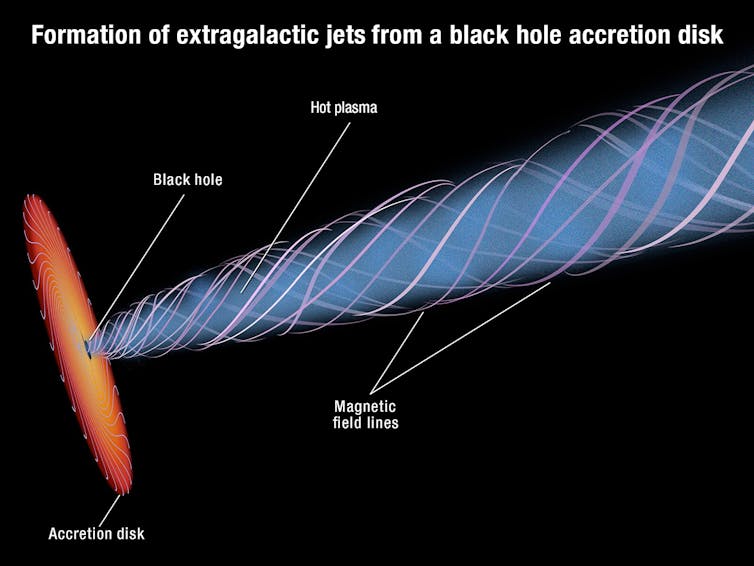
The accretion disk around a black hole can form a jet of hot, energetic particles surrounded by magnetic field lines.
NASA, ESA, and A. Feild (STScI), CC BY
These jets can speed up or suppress the formation of stars in a galaxy, depending on how the energy is released into the black hole’s host galaxy.
Rotating black holes
Some black holes, however, rotate in a different direction than the accretion disk around them. This phenomenon is called counterrotation, and some studies my colleagues and I have…
